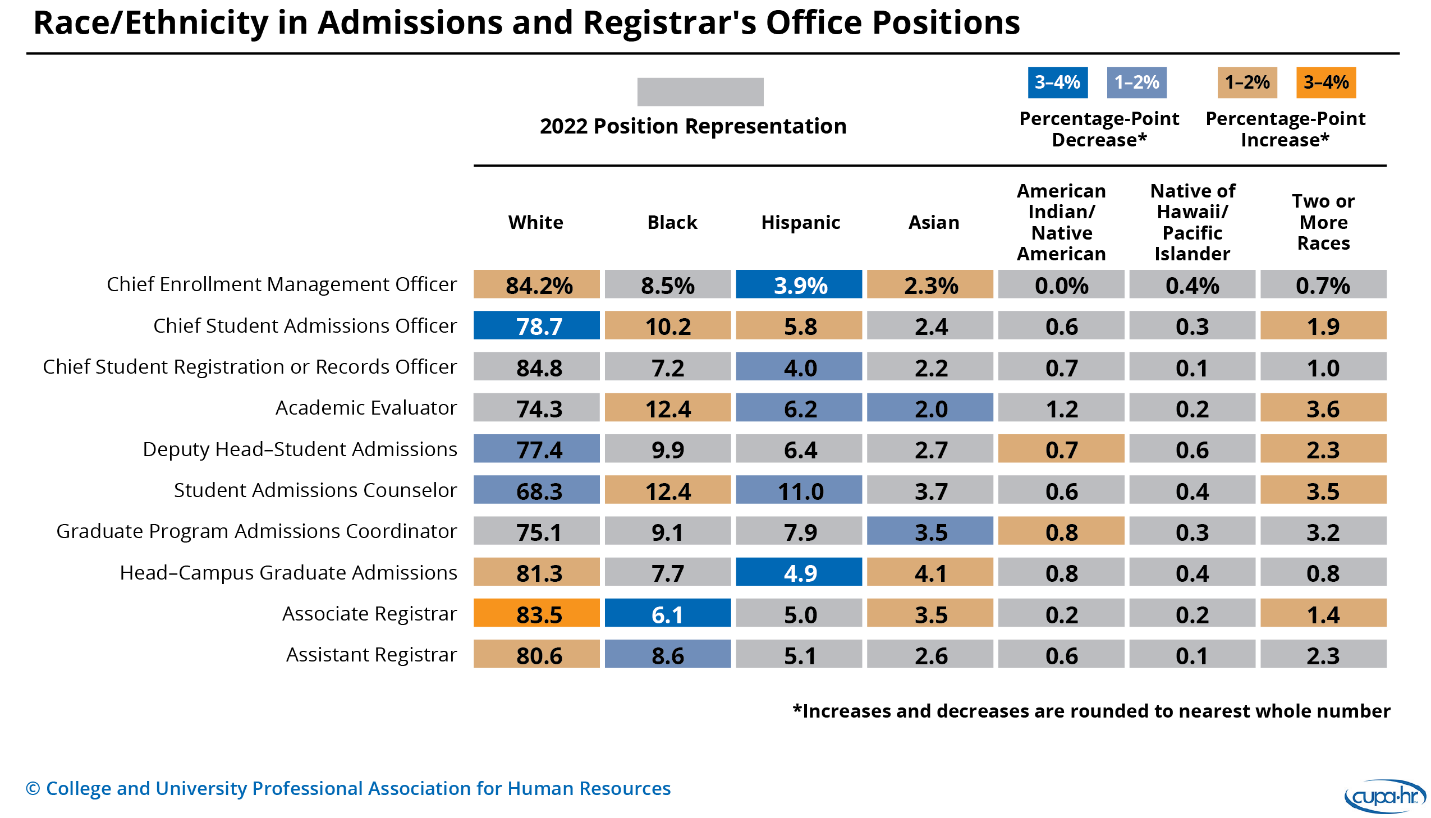
By Rob Shomaker and Diana Tubbs
The College and University Professional Association for Human Resources (CUPA-HR) has been collecting salary data for higher education positions since 1967. Annually over 1,100 institutions participate in our four core workforce surveys, which collect
salary and demographic data on administrators, professionals, faculty, and staff.
Both the Administrators and Professionals surveys collect data pertinent to the membership of AACRAO. This article takes a brief look at salary as well as gender and race/ethnicity composition for admissions and registrar’s office positions.
The table below shows these positions and their overall median salaries effective November 1, 2021. The median percentage change for these positions from 2020 to 2021 is in line with what has been experienced in higher education overall, on average about 3%. However, as reflected across higher education, salaries have not kept up with soaring inflation, which was 6.8% at the time the salaries
below were reported.

CUPA-HR also collects demographic data for gender and ethnicity. Our longitudinal data allows for comparisons between points in time and allows us to see how this segment of the workforce has changed throughout the pandemic. Currently, women hold
70% of admissions and registrar’s office positions. There have been no notable changes over the past two years with women’s representation in individual positions with the exception of chief student admissions officer and graduate
program admissions coordinator, both of which had an approximately three-percentage-point increase in women’s representation.

Overall, the race/ethnicity makeup of these positions is largely unchanged. However, there are some shifts worth noting. There is a percentage-point increase in the chief student admissions officer position in the representation of Black (+1.7), Hispanic
(+0.8), and multi-racial/ethnic individuals (+1.6). There is also a percentage-point decrease in the representation of Black associate registrars (-4.3), Hispanic chief enrollment management officers (-2.6), and Hispanic heads of campus graduate
admissions (-3.2).

Overall, the data reflect that the COVID-19 pandemic did not have a substantial impact on the demographic makeup of these positions. The lack of change is notable and should be seen as positive, because – in other industries -- women and minority workers experienced the highest rates of job loss due to the pandemic.
However, these positions are still largely held by White women. As we proceed forward in this largely uncertain, tumultuous work environment where we are striving to both retain and attract talent, it is important that we consider our current demographic
diversity to ensure that our faculty and staff reflect the students we serve.
For individuals, departments, or institutions that aren’t sure where to start, be sure to check out CUPA-HR’s resources for diversity, equity, and inclusion.
Most of these resources are free. A great first step would be to assess your institution’s DEI efforts with our DEI Maturity Index. This is a free tool
that can be used as a conversation starter among campus colleagues.